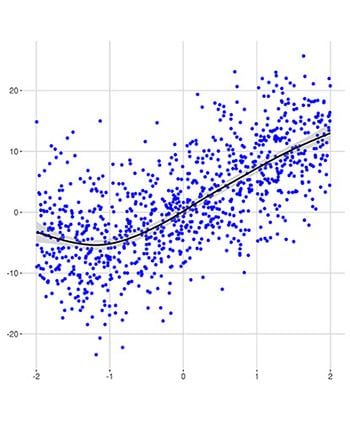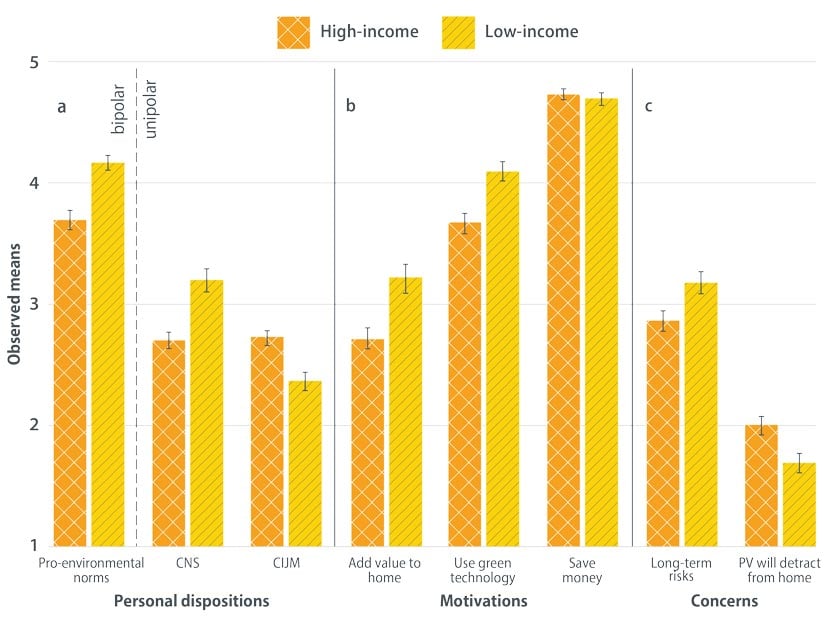Solar Energy Evolution and Diffusion Studies: 2017–2019 Low-Income Solar Adoption Study
The Solar Energy Evolution and Diffusion Studies (SEEDS) 2017–2019 study identified new strategies to dramatically scale up solar adoption rates in low-to-moderate income (LMI) communities.
The goal was to give LMI communities the same access to photovoltaic (PV) power that wealthier communities often enjoy.
In this study, NREL developed novel, data-driven, and evidence-based strategies to gain a deeper understanding of the potential LMI PV market with the goal of identifying pathways to dramatically scale up solar adoption in these communities.
Unlike most studies that have primarily focused on the decision-making processes and behavior of early adopters with high socio-economic status, the SEEDS 2017–2019 Study used data-driven methods to identify characteristics, motivations, and barriers to solar adoption in LMI communities. The 3-year project was funded by the U.S. Department of Energy Sunshot Initiative's SEEDS-2 program.
The Importance of Low-to-Moderate Income Solar Adoption
LMI families face many barriers to installing rooftop solar systems, including cash constraints, low rates of home ownership, and language barriers. For these reasons and more, solar adoption in the United States is concentrated in higher-income households, yet LMI families make up half of the country.

The study used survey analysis to help understand the roles and sources of referrals for PV adoption in LMI communities and use predictive models (example shown here) to understand previous adoption successes.
As more higher-income households adopt solar, retail prices could increase and make it even harder for lower-income households to go solar. Low-income households already put a larger share of their income toward their energy bills, also known as “energy burden.” If more solar is installed among LMI households, it can reduce energy burden.
Key Findings
Data from the SEEDS 2017–2019 Study revealed several key findings:
- LMI households represent 47% of U.S. rooftop solar technical potential—a large and underserved market.
- Profiles of LMI adopters are similar to early higher-income adopters.
- Saving money is the primary motivation across all households to adopt solar, though social influence plays a larger role in LMI adoption.
- Adoption is higher among those who consider themselves to be innovative and care about the environment.
- Social networks play an important role in encouraging LMI solar adoption.
- Referrals are both the highest quality and largest source of LMI solar leads, providing a promising mechanism to expand LMI programs further.
To see the full findings, read Rooftop Solar Technical Potential for Low-to-Moderate Income Households in the United States or explore the Solar for All map.

Observed means of personal dispositions (panel a), motivations for choosing solar (panel b), and concerns when considering PV (panel c) by income group. Higher scores indicate greater levels of consumer innovativeness, greater importance of different motivations, and being more concerned about an issue, respectively.
Detailed Findings
U.S. High-Income and Low-Income Rooftop Solar Adopter Profiles
NREL studied whether the same factors guide decision-making in higher-income and LMI households or if they have fundamentally different motivations and barriers.
The study surveyed over 500 LMI adopter households in California who received their solar PV systems for free through a nonprofit. Their responses were compared to those in an existing data set of high-income PV adopters in the same state. Results show that the LMI and high-income households sampled have similar profiles on key social-psychological variables known to be relevant to PV decision-making. Notably, both income groups felt a sense of personal obligation to address energy issues and were naturally intrigued by novel technologies. Likewise, saving money on their electricity bills was a primary motivation for going solar, followed by the desire to use and demonstrate the value of PV as a renewable energy technology.
Although the relative pattern of endorsement across measures was fairly parallel for LMI and high-income adopters, there were a few between-group differences on individual measures that warrant further examination. In particular, LMI respondents, on average, scored higher on pro-environmental norms and the motivation to use green technology than did high-income households.
LMI households also scored higher on consumer novelty seeking that high-income households, yet were less likely to rate themselves as independent judgment makers.
For more information, read More Alike Than Different: Profiles of High-Income and Low-Income Rooftop Solar Adopters in the United States, Energy Research & Social Science (2020).
U.S. Residential Rooftop Solar Potential and Penetration Distributional Disparities in Four Cities
This study merged national data sets for Riverside and San Bernardino, California; Washington, D.C.; and Chicago that estimate rooftop solar potential, the distribution of rooftop solar systems, and census tract-level socioeconomic and demographic characteristics.
The study analyzes three questions:
- How are spatial distributions of rooftop potential and penetration similar and different across cities?
- How is rooftop penetration distributed across non-LMI and LMI communities in different cities?
- How do the relationships between rooftop penetration and local socioeconomic and demographic characteristics, identified as barriers to solar adoption, differ?
Findings show higher rooftop potential existed in some LMI communities. Higher rooftop potential did not necessarily translate to higher rooftop penetration, especially if higher potential was in LMI communities; and beyond income, other socioeconomic and demographic characteristics such as race/ethnicity, limited English proficiency, age of housing stock, and internet access were associated with rooftop penetration.
Although there remains great potential for expanding rooftop solar to LMI households and communities, understanding the local dynamics of solar potential and penetration may inform better policy development and implementation.
For more information, read Distributional Disparities in Residential Rooftop Solar Potential and Penetration in Four Cities in the United States, Energy Research & Social Science (2020).
Approach
The SEEDS 2017–2019 study created opportunities to scale up the LMI solar market through three tangible, yet previously unexplored, mechanisms.
- Identified the feasibility of matching penetration rates in LMI households to that of the traditional PV market. The project team did this by determining the technical potential for owner-occupied LMI households, and likewise, the proportion of households that would need to be served by emerging adoption models, such as community solar or aggregated net metering. The team also conducted a deeper analysis into three representative regions to determine the range of existing institutional and market barriers to reaching widespread adoption.
- Developed predictive models to analyze the factors that have historically led to existing LMI adoption and extend these models nationally, to the practical benefit of project partners but also to inform a broader national dialogue. The structure of the project team allowed for the first time unparalleled access to a rich and previously unexplored dataset of LMI adoption in regions that have successfully increased LMI solar adoption.
- Collected new market data from existing LMI adopters to investigate non-economic motivations and barriers for getting solar, with a particular emphasis on understanding the role of social networks. This information informed the design and implementation of an experimental referral market pilot that will be embedded into the daily work of the project's nonprofit partner, GRID Alternatives.
Webinars
Watch videos and download presentations from SEEDS 2017–2019 study webinars.
SEEDS 2017–2019 Partners
The following partners collaborated with NREL on the SEEDS 2017–2019 study:
- Advanced Grid Consulting
- Grid Alternatives
- Lawrence Berkeley National Laboratory
- University of Chicago
- University of Michigan – Ann Arbor.
Contact
Share
Last Updated Nov. 17, 2025
